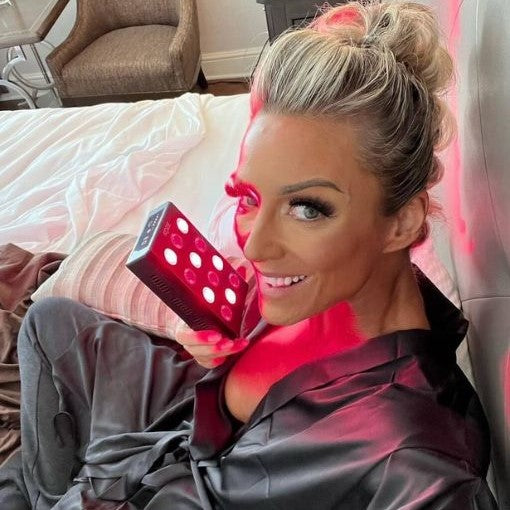
How To Get Rid Of Fine Lines
Fine lines are a natural part of the aging process, manifesting as small, shallow wrinkles or vertical lines that often appear around the eyes, forehead, and mouth. These delicate creases and wrinkles are the first signs of aging skin, resulting from a combination of factors such as decreased collagen production, reduced skin elasticity, and repetitive facial expressions. Environmental factors like sun exposure, pollution, and lifestyle choices such as smoking or poor hydration can also cause dynamic wrinkles and accelerate their development.
Addressing fine lines and wrinkles early is crucial for maintaining youthful, vibrant skin. Early intervention can prevent these initial signs of aging from deepening into more pronounced wrinkles and can help preserve the skin's natural firmness and elasticity. A proactive approach to skincare, including regular moisturization, sun protection, and a healthy lifestyle, can significantly delay the appearance of fine lines and deep wrinkles.
In recent years, skin color, red light therapy have emerged as modern solutions for combating fine lines and other signs of aging. This non-invasive treatment uses low-level wavelengths of red light to penetrate deep into the skin, stimulating collagen production and cellular regeneration. By promoting skin health from within, red light therapy can effectively treat wrinkles, reduce the appearance of fine lines, restore skin texture, and enhance overall skin tone, making it a valuable addition to any anti-aging skincare regimen.
Understanding Fine Lines
Fine wrinkles, or lines, are the subtle creases that first appear on our skin as we age. They are often confused with wrinkles, but there is a distinction between the two. Fine lines are shallower and less pronounced than wrinkles, which are deeper folds that develop as a result of more significant breakdowns in the skin's structure. While fine lines can be seen as the early stage of wrinkles, they are typically easier to address and can prevent wrinkles from deepening.
Common Causes of Fine Lines
Aging

As we age, our skin naturally loses collagen and elastin, the proteins responsible for keeping it firm and elastic. This reduction in the retin a collagen breakdown in skin elasticity leads to the formation of fine lines, particularly in areas where the skin is thinner and more delicate, such as around the eyes and mouth.
Sun Exposure

Ultraviolet (UV) radiation from the sun is one of the primary causes of premature aging of the skin. Prolonged sun exposure can break down collagen and elastin fibers in dark skin, leading to the early appearance of fine lines. It's essential to protect your skin with a high SPF sunscreen to prevent sun-induced damage and dry skin.
Dehydration

Hydrated skin appears plump and smooth, while dehydrated skin can look dull and accentuate fine lines. Lack of moisture in the skin can cause it to lose its elasticity, making fine lines more visible. Regularly moisturizing and drinking plenty of water can help keep your skin hydrated and reduce the appearance of fine lines.
Smoking

Smoking accelerates the aging process by reducing blood flow to the skin and exposing it to harmful chemicals. This can lead to a decrease in collagen production and result in the early formation of fine lines and facial wrinkles, especially around the mouth.
Facial Expressions

Repeated facial expressions, such as facial muscles such as smiling, frowning, or squinting, can cause fine lines to form over time. These are known as expression lines and are a natural result of the skin's movement. While it's impossible to avoid making facial expressions, being mindful of excessive squinting or frowning can help minimize the development of fine lines.
Prevention Tips
Preventing fine lines requires a holistic approach that includes a consistent skincare routine, sun protection, hydration, and healthy lifestyle choices. Here are some essential tips to help keep frown lines and your skin smooth and youthful:
Daily Skincare Routine for Preventing Fine Lines

1. Cleansing: Gently cleanse your skin twice a day to remove dirt, oil, and makeup that can clog pores and lead to premature skin aging too.
2. Exfoliating: Regular exfoliation helps remove dead skin cells and promotes cell turnover, keeping your skin fresh and reducing the appearance of fine lines.
3. Moisturizing: Use a daily moisturizer to keep your skin hydrated and support its natural barrier function. Look for products containing hyaluronic acid or glycerin, which are excellent for retaining moisture.
4. Serums and Treatments: Incorporate anti-aging serums or treatments containing ingredients like retinol, vitamin C, or peptides, which can stimulate collagen production and thereby reduce wrinkles and the appearance of fine lines.
importance of Sunscreen to Protect Against UV Damage
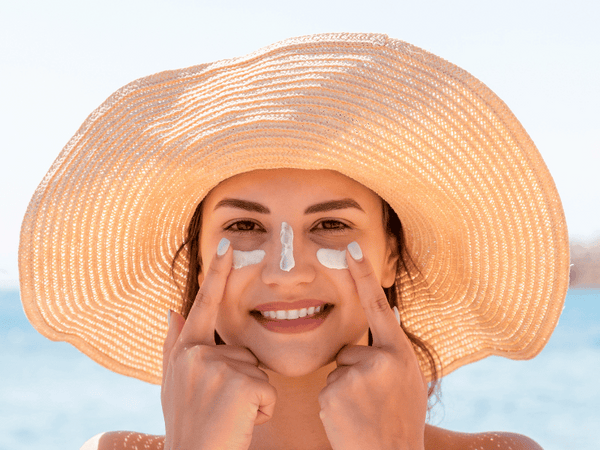
Sunscreen is a critical component of any anti-aging skincare routine. Apply a broad-spectrum sunscreen with an SPF of 30 or higher every day, even on cloudy days or when indoors, as UV rays can penetrate windows. Reapply every two hours when exposed to direct sunlight.
Hydration: Role of Water Intake and Moisturizers

Keeping your skin and body well-hydrated is crucial for maintaining a youthful appearance. Drink at least eight glasses of water a day to help keep your skin plump and reduce the visibility of fine lines. Additionally, use a moisturizer suited to your skin type to lock in hydration and keep your skin soft and supple.
Healthy Lifestyle Choices: Diet, Exercise, and Avoiding Smoking
-
Diet: Eat a balanced diet rich in antioxidants, vitamins, and omega-3 fatty acids. Foods like berries, leafy greens, nuts, and fatty fish can help protect your skin from damage and support collagen production.
-
Exercise: Regular physical activity increases blood flow, delivering essential nutrients to your skin and promoting a healthy complexion.
-
Avoiding Smoking: Smoking accelerates the aging process and can contribute to the formation of fine lines. Quitting smoking is one of the best things you can do for your skin's health and overall well-being.
Home Remedies for Fine Lines
Home remedies can be a gentle and natural way to reduce the appearance of fine lines. Here are some effective treatment options for reducing fine lines:
Natural Oils and Their Benefits
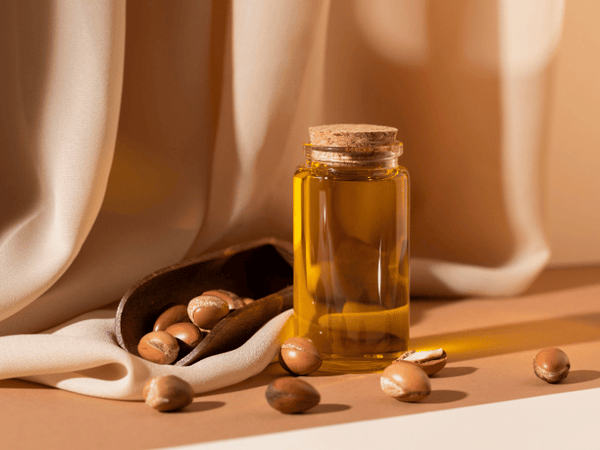
-
Jojoba Oil: It mimics the skin's natural oils, providing deep hydration and helping to reduce the appearance of fine lines. It also has antioxidant properties that protect the skin from environmental stressors.
-
Argan Oil: Rich in vitamin E and essential fatty acids, argan oil hydrates and nourishes the skin, improving its elasticity and reducing the visibility of fine lines.
-
Rosehip Oil: Known for its regenerative properties, rosehip oil is high in vitamins A and C, which promote collagen production and help diminish fine lines.
DIY Face Masks for Fine Line Reduction

-
Banana and Honey Mask: Mash a ripe banana and mix with a tablespoon of honey. Apply to the face and leave on for 15-20 minutes. Banana is rich in vitamins and antioxidants, while honey is a natural humectant that hydrates and soothes the skin.
-
Egg White and Lemon Mask: Whip one egg white and add a few drops of lemon juice. Apply it to the face and let it dry for about 10 minutes. Egg whites tighten the skin, and lemon juice is a natural source of vitamin C, which boosts collagen production.
-
Avocado and Yogurt Mask: Mash half an avocado and mix with two tablespoons of plain yogurt. Apply to the face and leave on for 20 minutes. Avocado is hydrating and rich in healthy fats, while yogurt contains lactic acid that gently exfoliates and smooths the skin.
The Role of Antioxidants in Combating Skin Aging
Antioxidants play a crucial role in fighting the signs of aging, including fine lines. They neutralize free radicals, which are unstable molecules that can damage skin cells and accelerate the aging process. Incorporating antioxidants into your skincare routine and diet can help protect your skin and reduce the appearance of fine lines. Some potent antioxidants for skin health include vitamin C, vitamin E, and green tea.
Professional Treatments for Fine Lines
For those seeking more dramatic results in reducing fine lines, professional treatments can offer effective solutions for reducing fine lines. Here's an overview of some popular treatment options:
Botox Injections
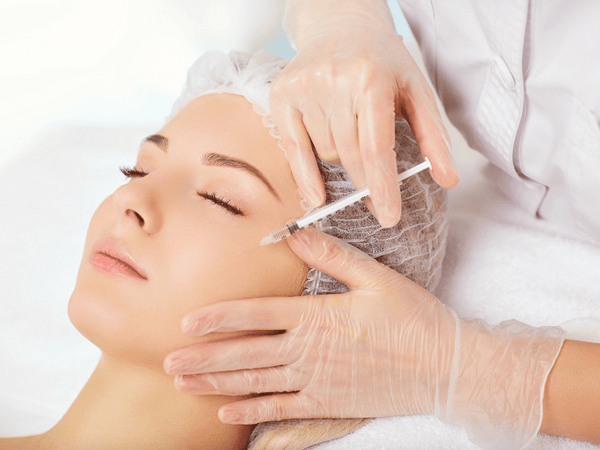
-
Overview: Botox is a neurotoxin that temporarily paralyzes muscles, reducing the appearance of fine lines caused by facial expressions, such as crow's feet and forehead lines.
-
Pros: Quick procedure with minimal downtime; results can last 3-6 months.
-
Cons: Requires regular maintenance; potential side effects include bruising, swelling, and rare allergic reactions.
Dermal Fillers
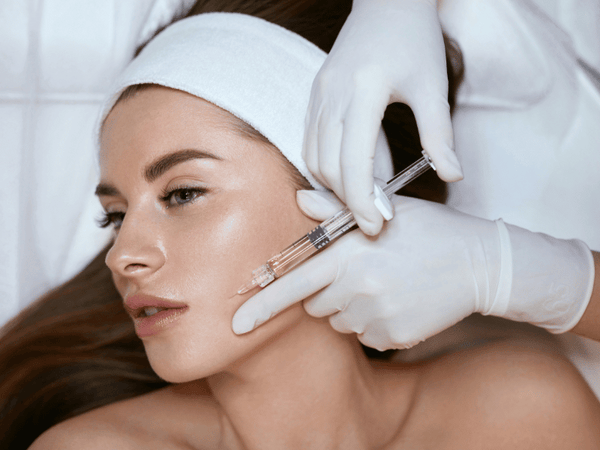
-
Overview: Dermal fillers are injectable treatments that add volume to the skin, smoothing out fine lines and wrinkles. Common fillers include hyaluronic acid and collagen.
-
Pros: immediate results; can last 6–12 months, depending on the type of filler used.
-
Cons: Possible side effects include swelling, redness, and bruising; there is a risk of uneven results if not administered by an experienced professional.
Chemical Peels

-
Overview: Chemical peels involve applying a chemical solution to the skin, which exfoliates the top layers and promotes new, smoother skin growth.
-
Pros: Can improve skin texture and reduce the appearance of fine lines; various strengths are available for different skin types.
-
Cons: Downtime varies with the intensity of the peel; potential side effects include redness, peeling, and sensitivity to sunlight.
Laser Therapy

-
Overview: Laser therapy uses focused light to target and remove the outer layer of the skin, stimulating collagen production and reducing fine lines.
-
Pros: Can provide long-lasting results; improves overall skin texture and tone.
-
Cons: Requires multiple sessions for optimal results; potential side effects include redness, swelling, and changes in skin pigmentation.
Disclaimer: Each of these professional treatments has its own set of advantages and disadvantages. It's essential to consult with a dermatologist or skincare professional to determine which medical treatments are the most suitable option for your skin type and concerns.
The Power of Red Light Therapy
Red light therapy is a non-invasive treatment that harnesses the healing power of low-level red light wavelengths to promote skin health and rejuvenation. It works by penetrating deep into the skin's layers, where it stimulates cellular energy production and boosts the natural healing processes of tightened skin.
Benefits of Red Light Therapy for Fine Lines

Collagen Production
One of the key benefits of red light therapy is its ability to stimulate collagen production. Collagen is a vital protein that provides structure and elasticity to the skin. As we age, collagen production declines, leading to the formation of fine lines. By boosting collagen levels, red light therapy helps to reduce the appearance of fine lines and improve skin firmness.
Skin Rejuvenation
Red light therapy promotes overall skin rejuvenation by enhancing blood circulation and increasing the supply of oxygen and nutrients to the skin cells. This process accelerates cell turnover, resulting in smoother, more radiant skin with a more even skin tone throughout.
Reduction of Inflammation
Inflammation can contribute to the aging process, and the development of fine lines reduces wrinkles. Red light therapy has anti-inflammatory properties that help to soothe the skin, reduce redness, smooth wrinkles, and minimize the appearance of fine lines caused by inflammation.
How to Incorporate Red Light Therapy into Your Skincare Routine
Red light therapy can be easily incorporated into your existing skincare and skin care routine, too. Here are some tips for getting started:
-
Professional Treatments: Many spas and dermatology clinics offer red light therapy sessions. These treatments are typically more powerful and can provide faster results.
-
At-Home Devices: There are a variety of red light therapy devices available for home use, including handheld wands, face masks, and panels. Follow the manufacturer's instructions for usage frequency and duration.
-
Consistency: For the best results, consistency is key. Red light therapy typically requires multiple sessions over several weeks to see noticeable improvements in fine lines.
-
Complement with Skincare: Combine red light therapy with a skincare routine that includes moisturizing, sun protection, and other anti-aging products to enhance the overall effectiveness.
Lifestyle Changes for Healthy Skin
Achieving healthy, youthful skin is not just about topical treatments and professional procedures. Your lifestyle choices play a significant role in the condition of your skin. Here are some key lifestyle changes that can support healthy skin and prevent premature aging:
Impact of Diet on Skin Health
Foods to include:
-
Antioxidant-rich foods: Berries, leafy greens, and nuts are packed with antioxidants that protect the skin from free radical damage.
-
Omega-3 fatty acids: Fatty fish, flaxseeds, and walnuts help maintain skin elasticity and reduce inflammation.
-
Vitamin C-rich foods: citrus fruits, strawberries, and bell peppers support collagen production and promote a radiant complexion.
Foods to avoid:
-
Sugar and refined carbs: High-glycemic foods can trigger acne and contribute to the breakdown of collagen, leading to premature aging.
-
Processed and fried foods: These can cause inflammation and oxidative stress, negatively impacting skin health.
-
Excessive alcohol: Alcohol dehydrates the skin and can lead to puffiness and fine lines.
Importance of Sleep for Skin Regeneration
Sleep is crucial for skin health, as it's during this time that the body repairs and regenerates skin cells. Aim for 7-9 hours of quality sleep each night for about a week to support the natural skin renewal process. Lack of sleep can result in a dull complexion, dark circles, and an increase in the appearance of fine lines.
Stress Management Techniques for Preventing Premature Aging
Chronic stress can accelerate the aging process by triggering inflammation and oxidative stress in sensitive skin. Incorporating stress management techniques into your daily routine can help protect your aging skin:
-
Meditation and mindfulness: These practices can reduce stress levels and promote a sense of calm.
-
Regular exercise: Physical activity increases blood flow, delivering more oxygen and nutrients to the skin. It also helps reduce stress hormones.
-
Deep breathing: Taking deep, slow breaths can help reduce tension and stress.
-
Adequate hydration: Drinking plenty of water helps keep the skin hydrated and flushes out toxins.
Conclusion
Fine lines are a natural part of the aging process, as skin wrinkles, but with the right strategies, you can minimize their appearance and maintain youthful-looking skin. Here's a recap of the key points to remember:
-
Prevention is Key: Start with a daily skincare routine that includes cleansing, moisturizing, and applying sunscreen to protect against UV damage. Hydrate your skin from the inside out by drinking plenty of water.
-
Natural Remedies: Incorporate natural oils and DIY face masks into your routine for added hydration and nourishment.
-
Professional Treatments: Consider treatments like Botox, dermal fillers, chemical peels, and laser therapy for more significant results. Consult with a dermatologist to find the best option for your skin.
-
Red Light Therapy: Explore the benefits of red light therapy for boosting collagen production, rejuvenating the skin, and reducing inflammation.
-
Lifestyle Changes: Maintain a healthy diet, get enough sleep, and manage stress to support overall skin health.
It's never too early to start taking care of your skin. Consistency is crucial, so commit to a regular skincare routine and make lifestyle choices that support your skin's health. Remember, aging is a natural process, and fine lines and wrinkles are a normal part of that journey. Embrace the aging process and treat wrinkles gracefully, focusing on the health and vitality of your skin rather than just its appearance. By taking proactive steps toward younger-looking skin, you can age beautifully and maintain a radiant, youthful complexion for years to come.
